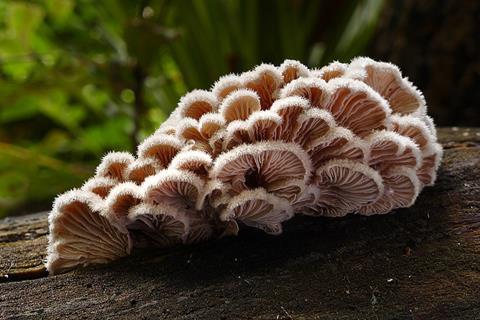Scientists at McMaster University have demonstrated that natural genetic variations in a common species of mushroom can be used to create new strains capable of making customized, biodegradable replacements for fabric, plastic, packaging and other environmentally harmful materials.

While mushrooms are already being used to produce a wide variety of eco-friendly products, manufacturers face a major challenge: mushrooms can vary widely in strength and flexibility, even when they are grown and processed in the same manner.
READ MORE: Bacteria and fungi found on bat wings that could help fight deadly white-nose syndrome
READ MORE: Novel insights into Candida glabrata in pregnant women’s reproductive tracts in Hainan
For this study, researchers investigated how the natural genetic variation of the split gill mushroom, which is found all over the world, can influence the characteristics of the fungal mycelium, the root-like but extremely versatile filaments fungi use to grow and feed.
These structures can be harvested and processed into sustainable materials such as vegan leather and foam alternatives.
Genetic diversity
“This is the first study to examine how genetic variation within a species could potentially influence material properties so we can tailor materials for specific purposes,” explains Jianping Xu, a professor of biology at McMaster University and senior author of the paper, who designed the study with Viraj Whabi, a former undergraduate student of materials engineering and a recent graduate student in biology at McMaster.
The split gill mushroom has an enormous range of natural genetic diversity, making it an ideal candidate for exploring and developing new materials for different purposes, such as soft and pliable materials for fabrics, strong materials for building supplies and water-resistant ones for packaging.
12 new strains
Researchers chose four strains of the mushroom from different parts of the world and bred them to create 12 new strains, each with different genetic combinations.
They grew the strains in liquid to form fluffy mats of mycelium, which were then turned into films by soaking them in different conditioners and used those to determine that some strains made stronger, heavier or more flexible films than others, and that there was no single best strain.
“It’s possible to use natural genetic variation that already exists in nature and to make combinations that will potentially fit into all kinds of materials, not just one,” says Xu.
The study was published in the Journal of Bioresources and Bioproducts.







No comments yet